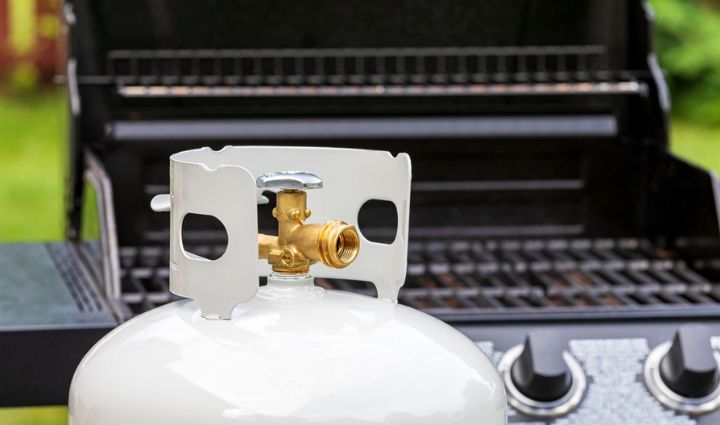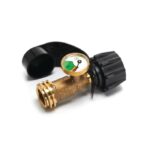Nothing puts a damper on a cookout like discovering your gas grill is low on fuel midway through the grilling process.
Checking your propane level before you start grilling is always a good idea, and it only takes a few seconds. If you’ve never checked a propane tank level before or if you’re not confident in your ability to use a propane gauge (or you’re not sure your gauge is working properly)—worry not!
In this post, we’ll give you all the information you need to check your grill’s propane level, including:
- How to measure propane tank level
- How to check propane tank level with water
- How to measure propane tank level with a propane gauge
- How does a propane gauge work?
- How to check propane tank level by weighing the tank
Let’s begin.
How to measure propane tank level
Measuring your propane tank level, with or without a gauge, is fairly straightforward and can be easily done using items you likely already have access to, such as:
- A glass of hot tap water (not boiling water)
- A propane gauge
- A scale
How to check propane tank level with water
The easiest way to check your propane tank level without a propane gauge is with
a simple glass of hot tap water.
With your hot tap water ready, follow these steps:
- Pour the water over the side of your propane tank.
- Touch the tank from top to bottom to find the point where it transitions from hot to cold—the propane will absorb the heat from the water, so the hot area will indicate where it is empty and the colder area will show where it is filled with propane.
That’s it! This method is less precise than using a propane gauge, but if you aren’t ready to invest in a gauge or yours is malfunctioning, you can use this grill hack to get a clear enough idea of whether you have enough propane to last through your cookout.
How to check propane tank level with a propane gauge
Propane gauges are the most reliable way to check your tank’s propane level.
These devices are most commonly a dial gauge numbered between 5% and 95%. When reading a propane gauge, there are some important things to know:
- The gauge indicates the percentage of propane in your tank rather than the number of gallons.
- In addition to the percentage marker, there are three colours that indicate how much propane you have left: green (lots of gas!), yellow (getting low—you need to refill soon), red (you should refill ASAP).
- Propane tanks are never filled to 100% capacity in order to give the gas room to expand. So, a full tank will read 80% at most.
- You should refill your tank when it gets below 20%.
HOW DOES A PROPANE GAUGE WORK: Propane gauges are protected by a plastic or metal cover that needs to be removed in order to read it. There are a few different types of propane fuel gauges, but the one you will most commonly see is a pressure gauge, which measures how much pressure there is in the tank. Similar to how a tire gauge reads the air in your car tires, this type of propane gauge registers how much pressure is hitting up against its parts and displays the number as a percentage on the gauge’s dial face.
Most tanks do not come with a propane gauge installed, so you will need to purchase and install your own. Installing a propane gauge is easy and requires no tools.
Shop for propane gauges:
How to check propane tank level by weighing the tank
You can also check your propane tank level by simply weighing the tank.
A full 20 lb tank of propane weighs around 37 or 38 lbs—the tank itself weighs around 17 or 18 lbs, and the propane makes up the remaining 20 lbs in a full tank. Since you are supposed to refill your tank when it gets close to the 20% mark, if your tank weighs in around 22 lbs—meaning you have roughly 4 lbs or 20% of 20 lbs of propane left—it is time to refill.
Conclusion
If you suspect your tank is getting low, you can check your propane level by:
- Using a glass of hot water
- Using a propane gauge
- Weighing your propane tank



